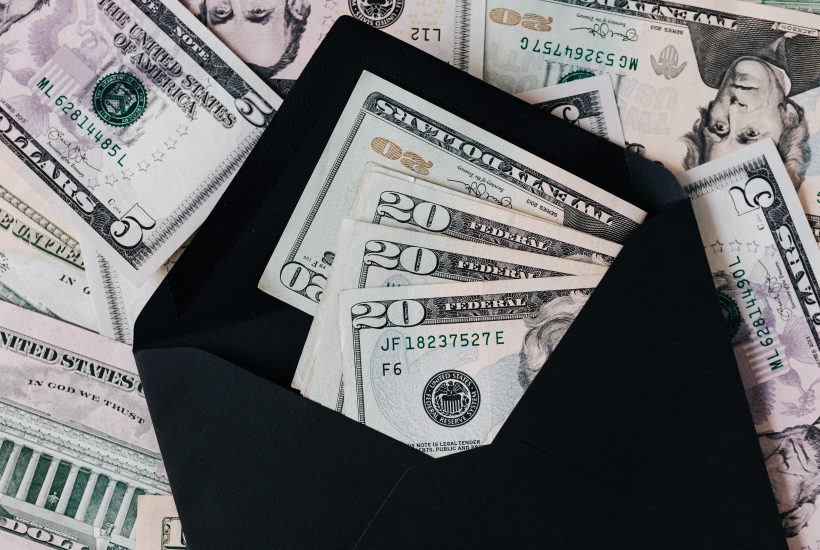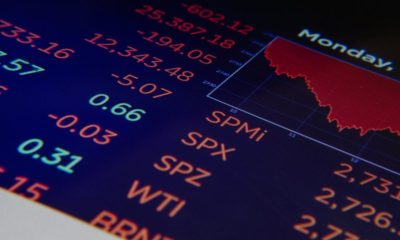Business
What You Need to Know About Inflation and Retirement Planning
In general, a high-inflation environment is less than ideal for investors. However, if you know how to prepare for inflation before it strikes in earnest, you can position your portfolio to better weather the storm. Follow these tips and work with your financial advisor to design an inflation- and retirement-planning strategy geared to keep you protected as consumer prices continue to rise.

With persistent supply-chain bottlenecks and rising general prices, the Federal Reserve is tightening monetary policy to combat inflationary pressures. This year, the Fed has begun raising interest rates and tapering its monthly bond purchases. With it, Chairman Jerome Powell has executed several rate hikes with more to come before the year is out.
Dovish central bank monetary policy contributes to inflationary pressures, as an increased monetary supply results in higher prices for goods and services. Another factor is fiscal stimulus. An enormous rise in federal deficit spending during 2020 and 2021 contributed greatly to the inflationary pressures that are plaguing the economy in 2022.
Should Investors Play the Waiting Game?
Inflation should remain persistently high for years to come because global debt as a percentage of GDP is at a higher level than it has ever been in recorded history. In our view, the resolution to this problem will likely take the form of a multiyear inflationary period. The Federal Reserve may temporarily reduce inflation from current levels, but the average inflation rate going forward will likely remain uncomfortably high.
That inflation will be driven by continuing efforts by the Federal Reserve to cap interest rates below the rate of inflation and periodic multitrillion-dollar stimulus packages passed by Congress. If our long-term prediction is correct, inflation will cause GDP to grow more quickly than debt while low-interest rates will cause debt to grow more slowly than GDP over time.
Of course, investors can’t afford to sit back and wait. They can (and should) act on inflation and make retirement-planning decisions to help make their portfolios and financial plans more resilient.
Is Inflation Good for Stocks and Bonds?
As we have seen during the first half of 2022, accelerating inflation can have a significant impact on stocks and bonds.
The best stocks to own when inflation is high are typically those of companies with high fixed costs and low variable costs, and those of companies with the ability to pass cost increases on to their customers. Likewise, the shares of companies with low price-to-earnings (P/E) multiples could outperform as prices rise. The worst companies to own are those that have no earnings or very slim margins and have a difficult time passing on rising costs to their customers.
Do the Numbers Add Up?
On the other hand, low-yielding bonds should generate poor investment results. With inflation rising, bond investors typically demand to be paid with higher interest rates, which is terrible for bond returns because bond prices have to fall in order for interest rates to rise. That’s exactly what happened during the first half of 2022.
The three-year Treasury bond is currently set to generate an annualized return of approximately 3%. If inflation consistently exceeds 5% over the next three years, real (inflation-adjusted) bond yields would be approximately -2% annualized.
Obviously, if you can shield yourself from the potential blowback of inflation, you should try to do so.
How to Protect Assets Against Inflation
If you’re an investor planning for retirement, you’re most likely wondering how to protect your wealth from inflation. With that in mind, here are five steps that could help you optimize your portfolio for an environment of steadily increasing consumer prices:
1. Reduce your exposure to dollar-denominated bonds.
Most retirement portfolios contain some mix of stocks and bonds. As investors age, they tend to allocate more capital to the latter to reduce risk and increase the amount of investment income their portfolios will generate in retirement.
Here’s the problem with that approach: The bond market is virtually uninvestable at the present time, with most bonds providing yields that are well below the rate of inflation. That’s not a recipe for preserving wealth over time.
2. Take a meaningful position in gold.
Gold is the hardest currency there is, which is why central banks around the world are accumulating it as foreign currency reserves. During periods when inflation is accelerating, gold has historically outperformed stocks by a large margin, and we expect that historical trend to continue going forward.
For investors who already own gold, owning shares of certain commodity producers can also be a useful inflation hedge. These companies should generate greater profits in an inflationary commodity price environment, and their stock prices could rise as a result.
3. Increase investments in companies with foreign operations.
The U.S. dollar continues to be one of the world’s safest currencies due to the dollar’s role as the world’s reserve currency. However, in an inflationary environment, the dollar typically weakens compared to the currencies of commodity producers. Companies that generate revenues in those currencies get a boost when their revenues and earnings translate back into dollars. As such, investors might want to consider investing in companies that do business in commodity-exporting countries with particularly strong current account balances.
4. Own real estate with a mortgage interest rate lower than current inflation rates.
If you are able to lock in a low-interest, fixed-rate mortgage, your costs remain somewhat fixed even as your home’s value rises. Moreover, there are plenty of public and private institutional real estate funds that can similarly take advantage of the combination of high inflation and low-interest rates.
5. Pick stocks selectively.
The best stocks to own in an inflationary environment are shares of companies with a low P/E multiple and low risk of P/E multiple compression; as interest rates rise, investors will expect earnings yields to also rise. Also, investors should favor companies that can operate with high fixed costs and low variable costs and enjoy the ability to pass cost increases on to their customers.
In general, a high-inflation environment is less than ideal for investors. However, if you know how to prepare for inflation before it strikes in earnest, you can position your portfolio to better weather the storm. Moreover, there are personal finance decisions you can make to mitigate inflation’s effect on your household budget. Follow the tips above and work with your financial advisor to design a wealth-preservation strategy that may keep you protected as consumer prices keep rising.
—
(Featured image by Karolina Grabowska via Pexels)
DISCLAIMER: This article was written by a third party contributor and does not reflect the opinion of Born2Invest, its management, staff or its associates. Please review our disclaimer for more information.
This article may include forward-looking statements. These forward-looking statements generally are identified by the words “believe,” “project,” “estimate,” “become,” “plan,” “will,” and similar expressions. These forward-looking statements involve known and unknown risks as well as uncertainties, including those discussed in the following cautionary statements and elsewhere in this article and on this site. Although the Company may believe that its expectations are based on reasonable assumptions, the actual results that the Company may achieve may differ materially from any forward-looking statements, which reflect the opinions of the management of the Company only as of the date hereof. Additionally, please make sure to read these important disclosures.

-

 Biotech4 days ago
Biotech4 days agoCAR-T Therapies: From Breakthrough Cancer Treatment to Faster, Safer, and More Accessible Immunotherapy
-

 Cannabis2 weeks ago
Cannabis2 weeks agoLuxembourg’s Cannabis Paradox: Legal at Home, Restricted Everywhere Else
-

 Crowdfunding1 week ago
Crowdfunding1 week agoCommunity Energies 2026: Funding Projects Combating Youth Loneliness
-

 Cannabis4 days ago
Cannabis4 days agoMedical Cannabis in Poland 2025: Growth, Stability, and Wider Access























